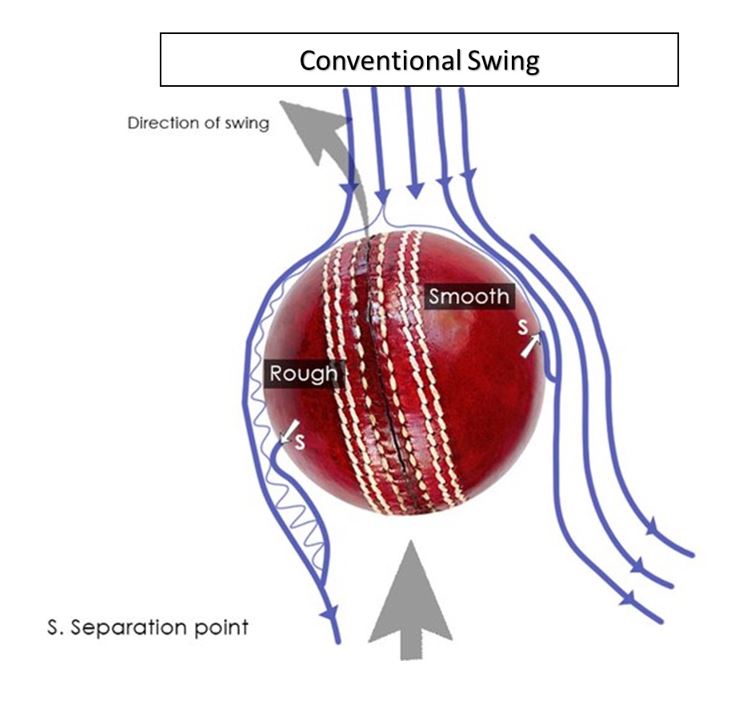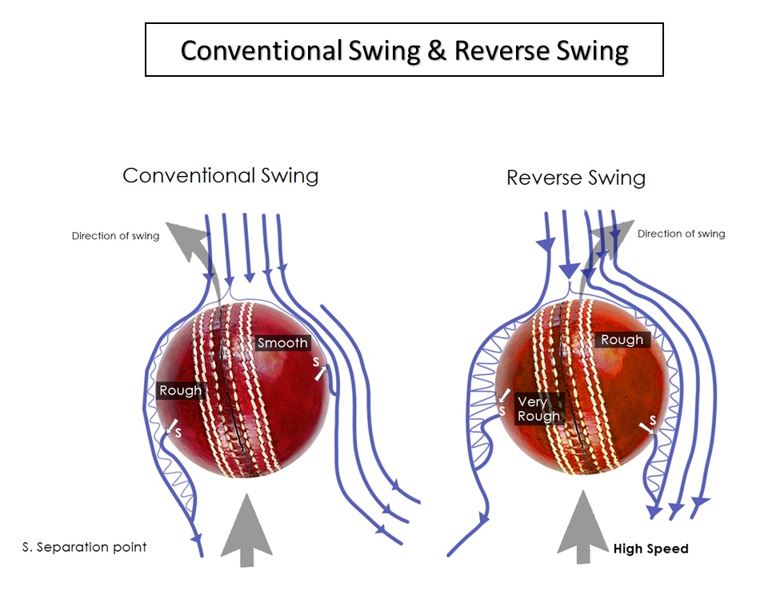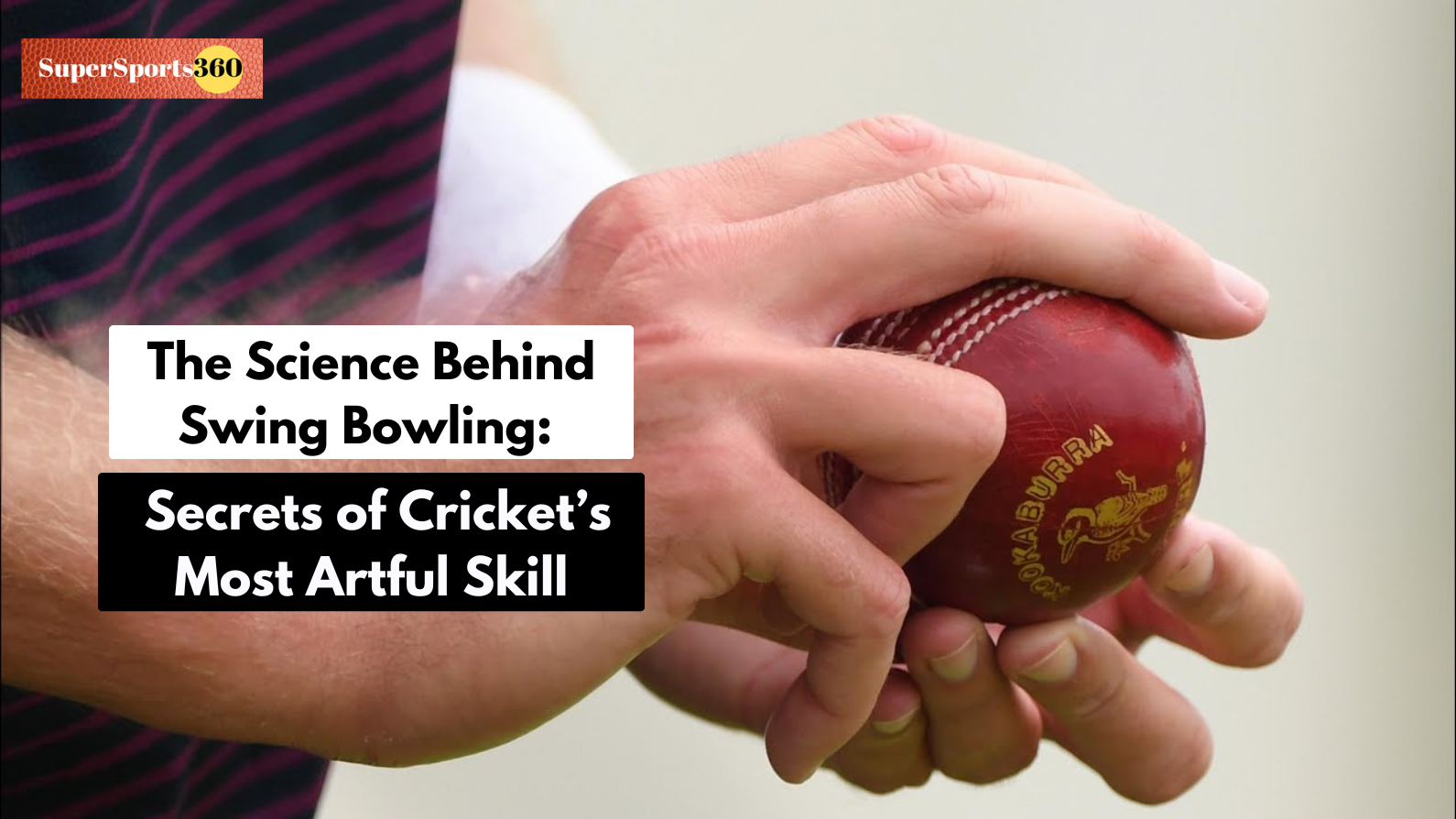The Batsmen score runs but it is said that Bowlers win you a cricket match.
Bowlers hunt as a group and based on the nature of the pitch and the weather conditions, the bowling attacks are decided.
Pace Bowling is one of the best visuals to explain the romance in the sport. Pace Bowling came into prominence initially due to the infamous Bodyline series but later became famous with the West Indies Team since the 70s.
How to swing a cricket ball
Based on Pitch, weather and atmospheric conditions, Pace bowling becomes even more lethal when the ball not only seams after pitching but also moves in the air (swing) which makes batting most difficult.
The condition of the cricket ball also plays a part in the degree of the ball swinging.
So, what’s the Physics of swing bowling?
Swing bowling is of various types- The Conventional Swing, Reverse Swing etc.
The ball moving is a science but to deliver the swinging ball requires skill of the pace bowler.
To differentiate the swinging ball or understanding the science is not easily understood by the average watcher of the game.
We will in this article try to explain swing bowling and the science behind it.
While bowlers may not fully understand the science of why a certain swing happens, they do understand the process required to move the ball.
For the swing bowling purists: Jimmy Anderson with a pink ball, under lights! pic.twitter.com/ZFS1T4hVR1
— cricket.com.au (@cricketcomau) May 12, 2024
Physics of swing bowling
What causes the ball to swing
- Surface of the ball
- Speed of the ball
Many Scientists have studied the reason for the swing but Rabindra Mehta probably explained it the best. He had written
“As the ball is flying through the air, a thin layer of air called the ‘boundary layer’ forms along the ball’s surface. The boundary layer cannot stay attached to the ball’s surface all the way around the ball and it tends to leave or ‘separate’ from the surface at some point. The location of this separation point determines the pressure and a relatively late separation results in lower pressure on that side. A side force or swing will only be generated if there is a pressure difference between the two sides of the ball”.
Both factors, i.e. Surface of the ball and its Speed determines the separation point of the boundary layer from the ball.
The conventional Swing bowling is most potent with the new ball. The shine of the ball is equal and the surface is smooth on both sides across the seam.
Here the position of the bowler’s grip plays the main role with no help from the layer air separation as the shine and smoothness remains the same in the initial phase.
After 15-20 overs, one side of the ball gets roughed up and the players ensure that shine is retained by constantly rubbing the ball using body sweat on the other side.
Because of the difference in the surfaces of the ball, the boundary layer air separation from the two surfaces happens in different manners. The smooth surface gives no resistance to the air, making the separation happen in laminar flow – smooth and quick. Whereas the rough surface generates disturbance in the flow, or what is known as turbulent flow – resulting in late separation, as explained by Rabindra Mehta

Using the seam to swing
The seam of the ball is used as the rough surface that creates turbulent flow in the air around it and causes the swing depending on the pointing of the seam.
With the conventional swing the wrist position of the bowler and the direction on the seam while delivering forces the ball to swing in the same direction.
For eg: if seam is pointed towards the slips, ball will tend to move away from the batsman. This is the conventional out swinger and when the seam is pointed towards the fine leg, the ball will swing into the batsman. This is the conventional inswinger.
Applying sweat or saliva on the ball and then rubbing it against the clothing helps the ball to keep its shine. However, post Covid Era, Saliva usage has been banned.
Reverse Swing bowling kicks in when the ball is 35-40 overs old and both sides of the ball is roughed up with one side shinier than the other due to the constant work on the ball.
In Reverse swing bowling, instead of the ball moving towards the rougher side, it moves towards the smoother side.
As the name suggest, ball reverses and goes on the opposite side as was the case in the conventional swing.
Rabindra Mehta explains that in the reverse swing the velocity of the ball causes the air to transition on both ends from turbulent to non-turbulent, which is amplified by the super rough surface. This thick layer of turbulence cannot hold on the surface and separates from the ball early. This results in the air on the turbulent layer of the relatively smoother side now sticking for a bit longer before separating, hence it leads to a reverse swing.

The Greatest Left Arm Bowler.
— Cricketopia (@CricketopiaCom) June 3, 2024
Wasim Akram’s brilliance in reverse swinging the old ball against New Zealand in Dunedin, 2001.
Happy Birthday @wasimakramlive
pic.twitter.com/v0rmiMQCOB
Best swing bowlers in cricket

It was Pakistan team which first understood and mastered the art of Reverse Swing bowling with a used ball. Sarfaraz Nawaz was first credited to own this skill later mastered by Imran Khan, Wasim Akram and Waqar Younis.
Why reverse is so different?
Good batsman keeps a close eye on the ball shine and make their initial trigger movement expecting how the ball will move after pitching. Reverse swing can keep the batter in doubt.
Sultan of swing, Wasim Akram his partner in crime, Waqar Yunis used to hide the position of the seam and the direction the smooth side is facing until just before the release.



Leave A Comment